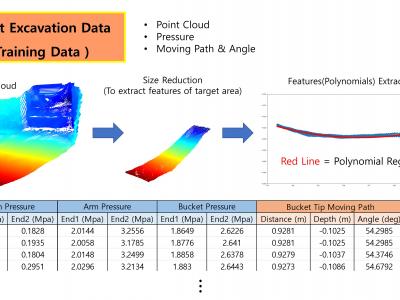Artificial Intelligence

Building segmentation image data set
- Categories:
 426 Views
426 Views
These datasets contain the database of the local television channels in the greater manila area (GMA) in the Philippines as of 2020. There are 8 databases corresponding to 8 eight channels namely Channel4.xlsx, Channel5.xlsx, Channel7.xlsx, Channel9.xlsx, Channel11.xlsx,
- Categories:
 184 Views
184 Views
Touch-screens are the basic and convenient human-computer interface. They are extensively used in digital musical applications, where a complex action-perception loop is involved. Therefore, it is crucial to establish a rich vibrotacticle feedback to improve the quality of the user's interaction. This paper explores the capacity of Generative Adversarial Networks (GANs) to generate time-reversed signals that can achieve localized vibrotactile feedback on a rigid surface.
- Categories:
 101 Views
101 Views
A converstional stance detection dataset.
- Categories:
 21 Views
21 ViewsThe data in this file include not only original data which is not preprocessed, but also training data to train our deep learning : bucket tip trajectory planning AI.
These csv files includes pressure, position, and angle of bucket tip, and current time, which were measured in real time excavation. Also, the point cloud is captured before each excavation.
- Categories:
 158 Views
158 Views
Biometric management and that to which uses face, is indeed a very challenging work and requires a dedicated dataset which imbibes in it variations in pose, emotion and even occlusions. The Current work aims at delivering a dataset for training and testing purposes.SJB Face dataset is one such Indian face image dataset, which can be used to recognize faces. SJB Face dataset contains face images which were collected from digital camera. The face dataset collected has certain conditions such as different pose, Expressions, face partially occluded and with a uniform attire.
- Categories:
 3099 Views
3099 Views
The dataset contains recorded and synthesized ASMR audio clips, as well as their corresponding psychological survey results, see details in the linked paper
- Categories:
 288 Views
288 ViewsFor academic purposes, we are happy to release our datasets. This dataset is in support of my research paper 'TOW-IDS: Intrusion Detection System based on Three Overlapped Wavelets in Automotive Ethernet'. If you want to use our dataset for your experiment, please cite our paper.
- Categories:
 4167 Views
4167 ViewsEvolving from the well-known ray-tracing dataset DeepMIMO, the DeepVerse 6G dataset additionally provides multi-modal sensing data generated from various emulators. These emulators provide the wireless, radar, LiDAR, vision and position data. With a parametric generator, the DeepVerse dataset can be customized by the user for various communication and sensing applications.
- Categories:
 255 Views
255 Views


